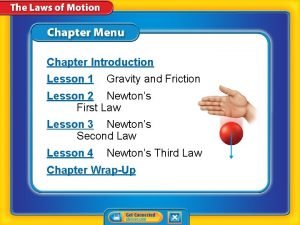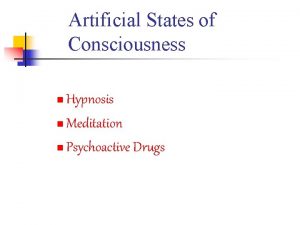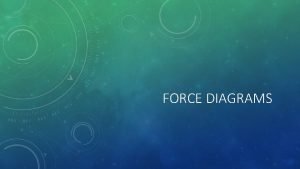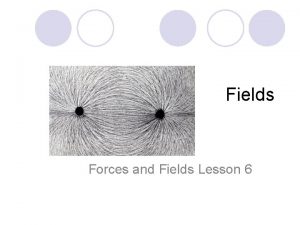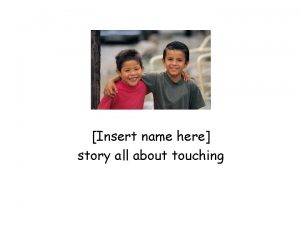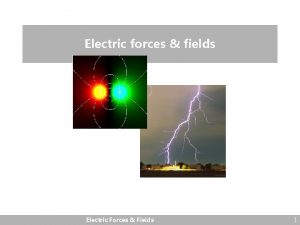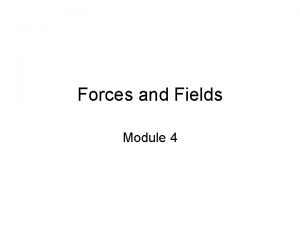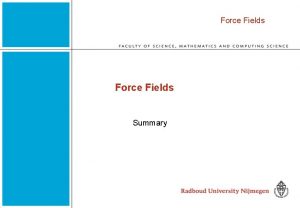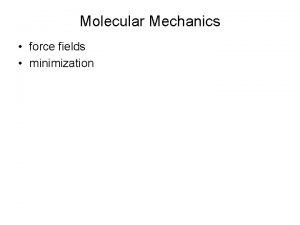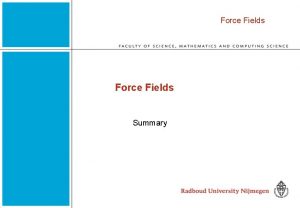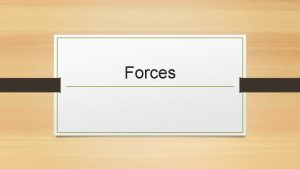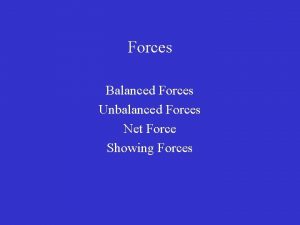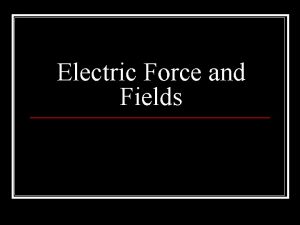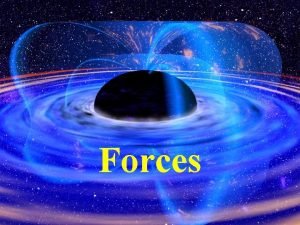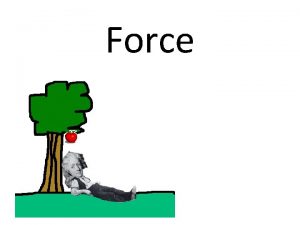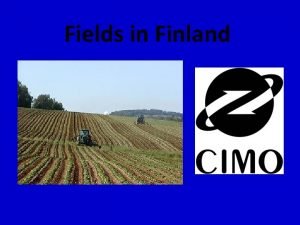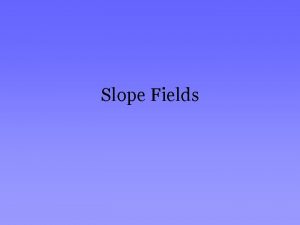Forces Can Act Without Touching Force Fields O























- Slides: 23

Forces Can Act Without Touching

Force Fields O When a force acts at a distance, the area in which an object experiences a force is called a field.

Types of Non-contact Forces OGravitational OElectrical OMagnetic

Gravitational Force O Gravity-Force of attraction between two objects due to mass. O Attractive force (pulls objects together) O The strength of the force is determined by the masses involved and the distance between them.

Factors that Affect Gravitational Pull OMass- Objects with greater mass have more attraction than objects with less mass. ODistance- Objects far apart have a weaker attraction than objects that are close together.


Difference Between Mass and Weight O Weight- Force of attraction due to gravity. O Can change due to the amount of gravitational pull. O An increase in gravitation pull will increase the weight on an object.

OMass- The amount of matter in an object. OWill not change unless you add matter or take it away. It is not affected by gravity. O http: //www. youtube. com/watch? v=wuml. TLUg. Pp. E

Electrical Force O Occurs when two charged objects exert a force on each other. O Charge- property that leads to electromagnetic interactions. O Protons- positive charge. O Neutrons-no charge. O Electrons-negative charge.


Factors that Affect Electric Force O Charge- The type of charge will determine if the objects attract (pull) or repel (push). O Unlike (opposite) charges attract. O Like (same) charges repel. O The amount of charge on each object affects the strength. (increase in charge=an increase in force)

Types of Charges

Factors That Affect Electric Force Cont. ODistance- the distance between object effects the electric force. OIncrease in distance= a decrease in force ODecrease in distance= an increase in force

Three Methods for Charging Objects O Friction-two objects rubbed together causing a transfer of electrons between objects. O Contact- a charged object and an uncharge object touch, and the charged object transfers its charge. O Induction- rearranging charges within an object without touching.

Materials That Affect Flow of Charge O Conductors- material that allows charges to move freely. O Ex. Copper and many metals. O Insulators- material in which charges can not flow freely. O Ex. Glass, rubber, plastic O Semiconductors- control the flow of charge O Ex. Silicon


Magnetic Force O Force that exerts from spinning electric charges. O Can attract or repel objects made of iron, nickle, cobalt, or a mixtures of these metals. O Like poles repel O Opposite poles attract


Factors that affect Magnetism O Distance- The greater the distance from the poles the weaker the magnetic field. O The closer the distance to the poles the stronger the magnetic field.

Causes of Magnetism O Type of atom- As electrons move in an atom it makes a magnetic field. When the amount of magnetic fields are the same, the object is not magnetized. When the amount of magnetic field are different, the object is magnetized.

O Formation of domains- groups of atoms form tiny areas with north and south poles. O When the north and south poles in the domains line up, the object makes a magnetic field.

Types of Magnets O Ferromagnets- material that can be turned into a magnet. (permanent magnets) O Ex. Iron, nickel and cobolt O Electromagnets- electric current produces a magnetic field. O Temporary Magnets- material whose domains temporarily line up after being rubbed with a magnet.

http: //www. youtube. com/watch? v=QCaa hq. DZr. AU
 What can you break without touching it?
What can you break without touching it? What can you break without touching it
What can you break without touching it Red fields to green fields
Red fields to green fields Gravity and friction lesson 1
Gravity and friction lesson 1 Electric forces and fields concept review
Electric forces and fields concept review Learning: module 26: magnetic forces and fields
Learning: module 26: magnetic forces and fields Chapter 16: electric forces and fields answers
Chapter 16: electric forces and fields answers We want to see your kingdom here
We want to see your kingdom here Can hypnosis force people to act against their will
Can hypnosis force people to act against their will Can hypnosis force people to act against their will
Can hypnosis force people to act against their will Macbeth act 2 summary
Macbeth act 2 summary Who’s the author of “without title”?
Who’s the author of “without title”? For my father who lived without ceremony
For my father who lived without ceremony Justify the title of keeping quiet
Justify the title of keeping quiet Example for like parallel forces
Example for like parallel forces The forces shown above are pushing/pulling forces
The forces shown above are pushing/pulling forces Intramolecular forces
Intramolecular forces Intra vs intermolecular
Intra vs intermolecular Intramolecular forces vs intermolecular forces
Intramolecular forces vs intermolecular forces What are some contact forces and some noncontact forces?
What are some contact forces and some noncontact forces? Unbalanced force
Unbalanced force Volcanoes constructive and destructive forces
Volcanoes constructive and destructive forces What is vehicle balance
What is vehicle balance Force diagrams and component forces
Force diagrams and component forces



